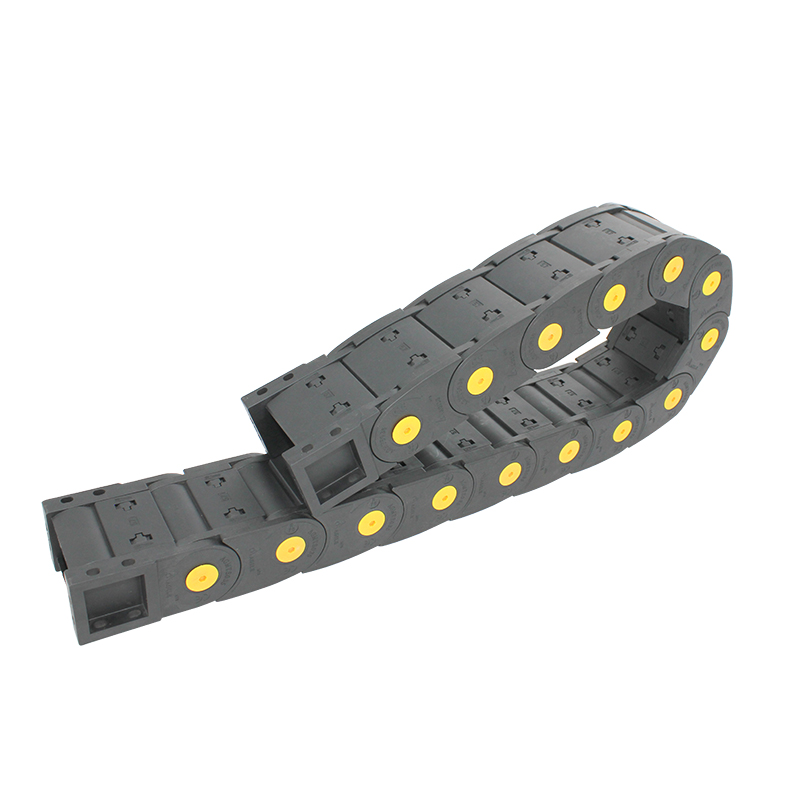steel cable carrier chain
Understanding Steel Cable Carrier Chains Applications, Benefits, and Innovations
Steel cable carrier chains are essential components in various industries, providing effective solutions for the management and protection of cables and hoses in dynamic environments. These chains are designed to safeguard critical electrical wires, hydraulic hoses, and other flexible components, ensuring they operate safely and efficiently while minimizing wear and tear over time.
What is a Steel Cable Carrier Chain?
A steel cable carrier chain, often referred to as a cable drag chain or energy chain, consists of interconnected links crafted from high-strength steel. These chains form a continuous, flexible conduit that allows for the guided movement of cables and hoses, particularly in environments where machinery undergoes frequent movement or rotation. The design of the chain allows it to bend and flex without kinking or damaging the cables inside.
Key Benefits of Steel Cable Carrier Chains
1. Durability Steel is known for its strength, which makes these cable carriers capable of withstanding heavy loads, extreme temperatures, and harsh environmental conditions. This durability is critical in applications such as manufacturing, construction, and aerospace, where equipment must operate under demanding circumstances.
2. Protection One of the primary functions of these carriers is to protect cables and hoses from abrasion, crushing, and environmental factors such as dirt, dust, and moisture. By using steel chains, businesses can significantly extend the lifespan of their equipment and reduce the risk of electrical failures or hydraulic leaks.
3. Flexibility and Range of Motion Steel cable carrier chains can accommodate a wide range of movements, including bending, twisting, and vertical and horizontal shifts. This flexibility is particularly advantageous in robotic applications, CNC machines, and conveyor systems, where dynamic movement is a constant.
4. Easy Installation and Maintenance The modular design of steel cable carrier chains allows for straightforward installation and replacement. Many manufacturers offer chains that can be easily customized to fit specific equipment and cable configurations. This ease of use facilitates quick maintenance and reduces downtime in industrial operations.
steel cable carrier chain

5. Safety Using steel cable carrier chains enhances workplace safety by encapsulating cables and hoses, preventing tripping hazards and potential damage to sensitive components. This safety feature is crucial in high-traffic areas where equipment and personnel interact frequently.
Applications in Various Industries
Steel cable carrier chains are utilized across multiple sectors.
- In manufacturing, they are commonly found in robotic arms, CNC machines, and assembly lines, where continuous motion and flexibility are required. - The construction industry employs these carriers in cranes and heavy machinery, where durability and strength are paramount. - In the aerospace industry, they are used in testing equipment and aircraft assembly lines, where high reliability is essential.
- The automotive sector utilizes steel cable carriers in automated production lines and electric vehicles, contributing to efficiency and safety.
Innovations and Future Trends
As technology advances, so do steel cable carrier chains. Innovations in materials and designs are emerging, including lightweight alternatives that maintain strength while reducing overall weight. Furthermore, manufacturers are digitalizing their offerings, providing smart cable carriers equipped with sensors to monitor wear and tear, thereby enhancing predictive maintenance capabilities.
Conclusion
Steel cable carrier chains are indispensable in modern industrial applications, ensuring the secure and efficient operation of machinery. Their durability, protection capabilities, flexibility, and ease of use make them a staple in numerous industries. As innovations continue to evolve, these chains are set to become even more integral to safe and effective operations in an increasingly complex and dynamic industrial landscape.








